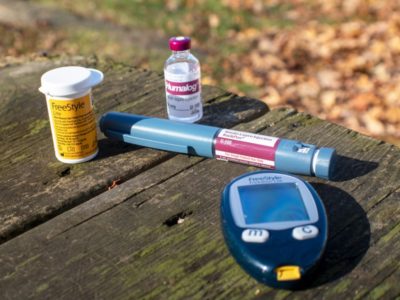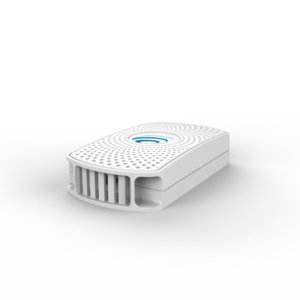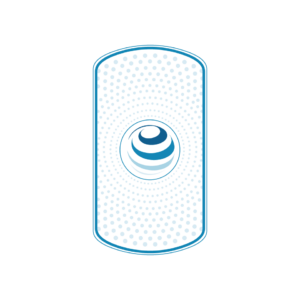Traveling when you have diabetes isn’t as simple as packing your bags and hitting the road (or the skies). Chances are, you need your trusty companion- your insulin.
Insulin is a life saving medication, in fact, over 7.4 million Americans use insulin to maintain their health. However, insulin is also sensitive to different temperatures. If you don’t know how to store insulin, your medication can become compromised and therefore less effective. Temperature is only one aspect of storing insulin, though. You also need to keep it out of direct light and try to maintain consistent storage conditions.
You might be able to manage your diabetes well at home, where you have the refrigerator and all the storage you need. However, when you’re traveling, you don’t always have the same things at your disposal (actually, you’re working with much less).

Then come the questions:
- How can I travel with diabetes?
- Is it safe to take my insulin with me?
- Will my insulin still be safe to use when I arrive?
- Can I go through airport security with insulin pens?
If you’re worried about these things, you’re certainly not alone. Millions of Americans rely on insulin to manage their diabetes, and still manage to travel and keep their medication safe.
Can I travel with insulin?
If you have diabetes, you know how important it is to keep your insulin on hand. While you can keep it at 77 degrees or below for up to 28 days, you can’t always ensure temperatures won’t get warmer. Keep ice packs in your insulin bag, and always keep it near you. You can take insulin on a plane with you, despite the liquids rule. However, it’s a good idea to notify TSA staff to prevent delays. For more tips on traveling with diabetes, check out the rest of our article.
Know temperature limits
Chances are you keep your insulin in the fridge at home until you’re ready to use it. That works just fine. However, you can’t exactly bring a refrigerator with you when you travel. You can however keep it in insulated bags with ice packs to keep it cold. That said, ice packs do melt, and you might encounter unexpected delays during your travel- so, you need to know what temperatures are considered safe for your insulin.
Unused insulin should be refrigerated and kept between 36 and 46 degrees Fahrenheit. Once you take out the insulin to use it, it can be kept at room temperatures for up to 28 days (in this case, room temperature is taken to mean 77 degrees or lower). For short term travel, this may not be an issue, and you can take a supply you’ll use within the next month.
Note: be aware of the climate when you travel. 77 degrees (or lower) doesn’t seem like a difficult temperature to manage, but during summer, you may find it’s quite the opposite.
Plan ahead
If you take insulin, you’re more used to planning in advance than not. Even if you bring a sufficient supply with you, it’s a good idea to keep a doctor’s note and a copy of your prescription with you. The doctor’s note can help answer any questions you may get about your luggage when traveling, and the extra prescription will come in handy should you lose your medication.
If you’re not comfortable bringing a hard copy of your prescription with you, make sure your pharmacy has your prescription (with refills) on file. If you do lose your insulin, you can contact a local pharmacy when you arrive at your destination. In most cases, they can contact your regular pharmacy to transfer the prescription. Make plans for losing your medication, delays in travel, and climate you can’t control.
Pack your insulin correctly
The best way to travel with insulin is by storing it in a well insulated container, with plenty of frozen ice packs. Try and place your insulin so that it will remain in the most stable position throughout your travel. It’s always a good idea to keep extra ice packs too. You might think you’re taking a short flight, but if you miss your connection, you could end up waiting several hours for the next flight. Likewise, you may find yourself delayed on the road or as you try to access your accommodations. Ice packs will stay cold even if they do warm a bit, but the more you have, the more you can control the temperature of your insulin.
The good news is, some insulin companies will even give you insulin travel packs for free. These are basically insulated bags that come with ice packs you can freeze before you travel. We recommend requesting your free insulin travel pack well in advance of your trip to ensure you receive it on time.
You’ll need to contact your insulin manufacturer or inquire at your doctor’s office for application or shipping information.
It’s a good idea to use a temperature monitor to keep track of the temperatures inside your insulin pack in case you experience delays or extreme weather. The Neo sensor is a small, portable monitor that takes readings from every 30 seconds up to every 15 minutes, depending on your preferences. It can update temperature readings in real time (if you have a wireless connection available), or upload a log of readings once you arrive. This little temperature monitor also allows you to customize set ranges of safe temperatures, and will alert you if temperatures go outside of that range.
Prepare for TSA (if you’re flying)
Whether you put your insulin through the x-ray machine or not is up to you. If you don’t want to take the chance, you can ask for a manual inspection of your insulin bag. No matter what, going through airport security is a time consuming process. If you’re also carrying insulin, it can be even more so.
To make things easier, and avoid having to repeat yourself dozens of times, carry an airport information card, also known as a TSA Notification Card. You can go online and print out the PDF to fill out yourself from the TSA website.
While you can take your insulin on board without worrying about the ‘liquids’ rule, it’s a good idea to be upfront with airport security to avoid any unnecessary delays.
Other big tips: how to make your trip easier
One of the biggest things you should know about traveling with insulin? Keep it by you whenever possible. Yes, you may have to hand over your insulin for inspection, but don’t let it get much farther away from you than that. Basically, do NOT put your insulin in checked bags. First, if you’ve ever had an airline misplace your luggage, you can imagine what a stressful situation this will create with insulin. Not only can your luggage with insulin be misplaced, the cargo hold is also subject to completely unregulated temperatures. Always keep your insulin in your carry-on.
On that note, you’re not excluded from this rule if you’re driving to your destination. You still need to keep your diabetes supplies near you. That means no storing them in your trunk, and don’t have them covered with other bags- if you need them or have an emergency you need to be able to access them as soon as possible. Also, if you keep them in the trunk or near the window on a hatchback, your ice packs can melt more quickly, making it difficult to control the temperature of your insulin.
Next, keep all your diabetes essentials with you, in your carry on. Consider modifying the idea of a diabetes emergency kit and making a ‘just in case’ travel kit. That means keeping lancets, your meter, snacks, etc with you in case you have a blood sugar issue.
If you’re flying, take care on the plane. It’s a good idea to let the flight attendant know you have diabetes so they can assist if you need extra help. While you may not plan on taking insulin mid-flight, you might need to. Because the air pressure changes while you’re in the air, it can also affect the pressure of liquids you’re carrying, namely, insulin. Make sure you check your insulin before using it, and pay attention for any bubbles that might have formed. As far as in flight meals go? Don’t count on it catering to your diabetic needs. You can call ahead and ask for nutrition information for the meals served on board, or ask if they can make a special meal that suits your diet.
What Temperature to Store Insulin?
If you have insulin you haven’t used yet it needs to be refrigerated. Keep these insulin catridges at 36°F to 46°F. Once insulin warms to room temperature, it shouldn’t be refrigerated again.
If you’re currently using an insulin catridge, you can safely keep it at room temperature (typically around 65°F to 77°F). You can also store insulin you’re using at temperatures lower than room temperature, as long as you don’t put them back in the refrigerator for reuse.
How long can you use room temperature insulin?
Most insulin manufacturers recommend that you use opened insulin within 28 days. It’s important to pay attention to your medication’s expiration date. While you can typically assume your medication will last for around a year after you receive it, it’s still important to ensure you know when it’s safe to use or not.
Keeping insulin at room temperature longer than 28 days can cause the insulin to degrade (meaning it will lose efficiency and potency). Most insulin loses around 1% of its potency when kept at room temperature for up to 30 days. This loss of potency continues the longer the insulin is left out, and the higher the temperatures it’s left in.
Insulin Storage Tips:
Temperature is important, but what else can you do to store your insulin properly?
- Keep insulin out of direct light
- Don’t use insulin that looks clouded (note: NPH insulin has a consistent cloudy look) or shows a strange clumped texture
- Use all room temperature insulin within 28 or discard unused insulin after this time period
- Make sure your refrigerator maintains accurate, consistent temperatures
- Prepare cold storage if you plan on traveling with insulin
- Don’t shake or handle your insulin roughly
- Beware of over cooling insulin- it should be no colder than 36°F
- Consider a monitoring system, such as the Neo to ensure your insulin is in proper conditions
- Make plans to store insulin in case there’s a power outage
Key features:
- Temperature range: -40°С to 70°С (-40°F to 158°F)
- Humidity range: 0% to 100%
- Dimensions: 70.6 x 38 x 17.8mm (2.78 x 1.5 x 0.7in)
- Weight 38 grams (1.34 oz)
- Waterproof rating IP66 (waterproof , dust proof)
- Broadcasting range: 100 meters (328 feet)
- Powered by two High Performance Lithium AAA batteries
- Battery lasts up to 3+ years
- Based on BLE technology
- Measures, stores, and uploads temperature and humidity readings
- Stores up to 6 months of data
- Upgradable to Massive Mesh

